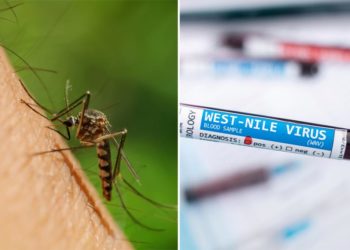Suppose you happen upon several baseball-sized fuzzy hands slowly crossing your path in the weeks to come. In that case, you’ve stumbled upon tarantula mating season. It’s the time of year when thousands of horny male arachnids crawl out of their dusty desert holes to find a mate or die trying.
Blasting from late summer to early fall, tarantula mating season kicks off after the first rain, with males scuttling across roads, campgrounds, and up your leg in a massive effort to get laid to create a new generation of little horrors.
Tarantulas don’t usually have the most romantic courtship. Males only have a single purpose in life: mating. They can take up to 10 years to mature, and when they mate, their lives are essentially over.
Their purpose fulfilled after depositing sperm into a female spider’s abdomen, some scurry away and die in the coming weeks, while others get devoured by the female right then and there.
Tarantula Mating Season Has Arrived
These spiders are found across the western and southwestern parts of the country, particularly in California, Texas, Arizona, New Mexico, and Colorado, with a smattering of other states. You’ll most likely spot the males in September through November during late evening hours, while females wait seductively in front of their burrows.
If a male finds one and the vibe is right, they mate. If not, he might exhaust himself to death or get murdered while basking in the sexual afterglow.
Tarantulas in the U.S. are harmless to humans unless you really mess with them. Their looks are much more terrifying than their demeanors. Their real value lies in pest control and ecosystem health. Tarantulas eat beetles, grasshoppers, and other bugs, keeping pests that much on greenery in check. Even their old burrows become homes for different animals.
But if you’re anything like me and you despise the thought of spiders regardless of how much good they do, sleep tight knowing that they’ve got plenty of predators sending out their numbers.
Coyotes and owls dine on tarantulas, as does the tarantula hawk, a living nightmare of a creature that is neither a tarantula nor a hawk—it’s a wasp, and a big one that so loves eating tarantulas that we’ve named it after its favorite meal.
That would be like if my name were Hot Dog Pizza Human.
As the Southwest becomes blanketed in tarantulas, there’s no need to freak out if one comes near you. A gentle poke with a stick will send it scurrying away. Just don’t touch it. That fur they’re covered in is called urticating hairs, and they can fire it off like little darts that can irritate your skin and eyes.
For most of the year, tarantulas are solitary creatures. But for a glorious six months, the American Southwest becomes one big tarantula orgy that ends tragically for its males. However, it’s all about keeping the species going.
The post Tarantula Mating Season Is Here: Which States Will See the Most? appeared first on VICE.




